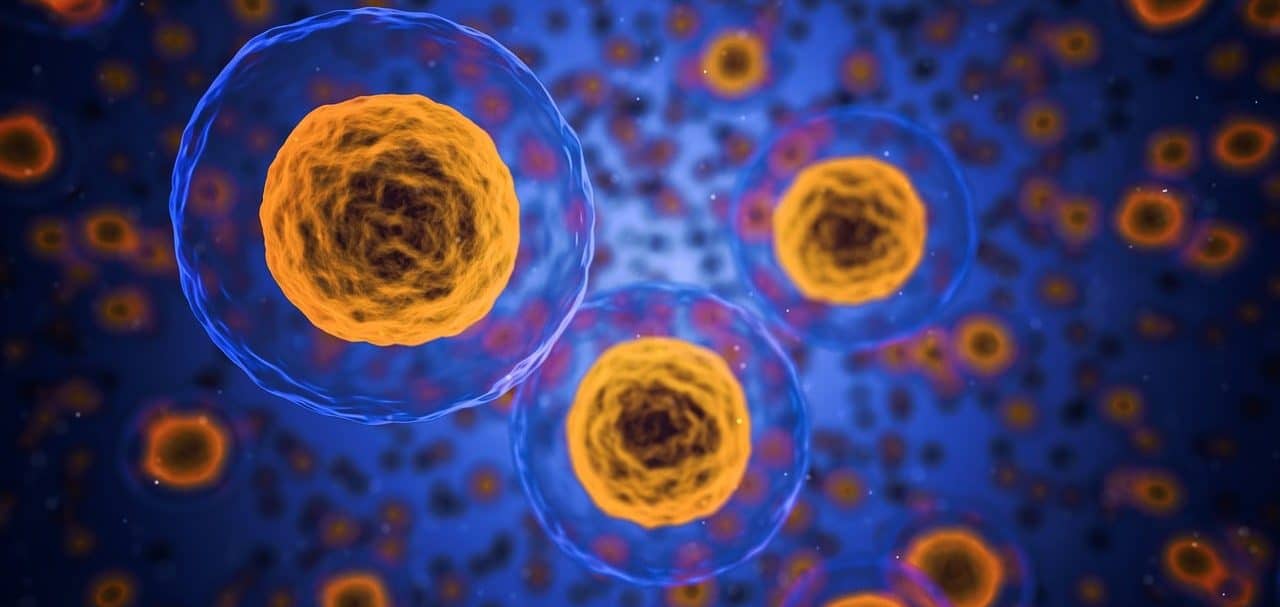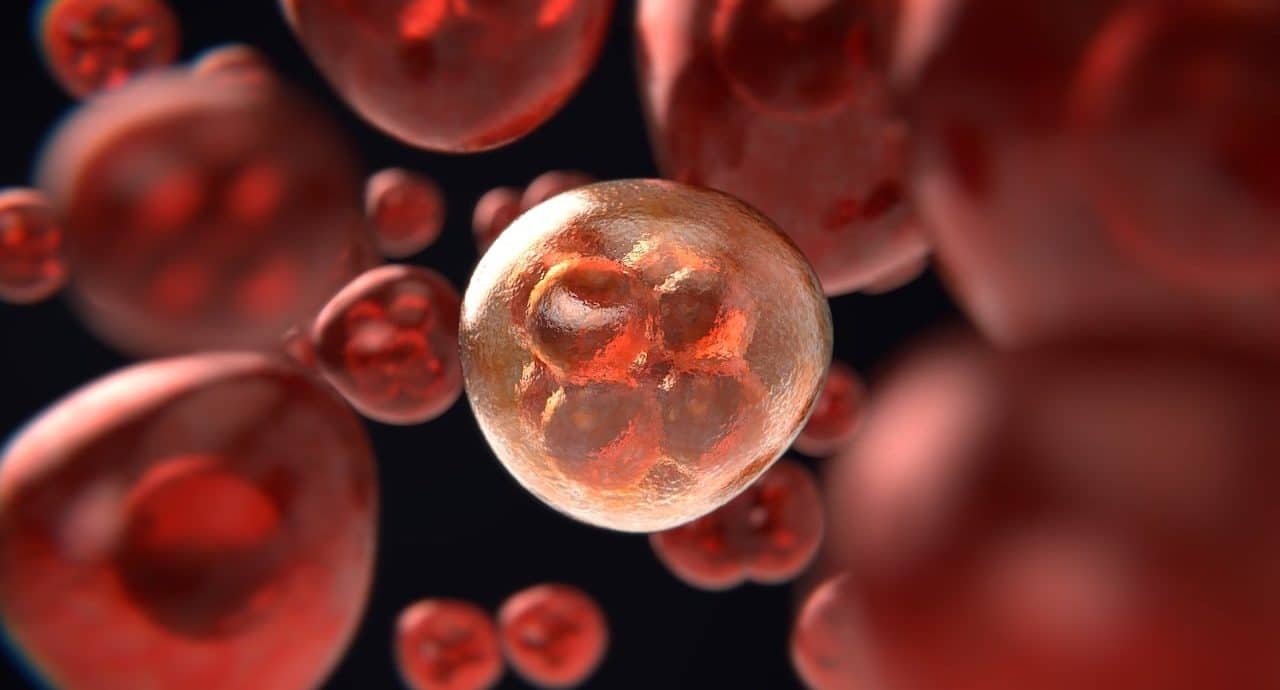
A mother cell generates two daughters through cell division.
Cell division is the process by which a mother cell divides to give rise to two daughter cells. This process is essential for the growth, development and maintenance of living organisms. Cell division occurs in two main stages: nuclear division , known as mitosis, and cytoplasm division , called cytokinesis.
During mitosis, the genetic material of the mother cell, which is contained in the cell nucleus, is replicated and distributed equally among its descendants. This process ensures that the daughter cells have an identical copy of the original DNA. Then, during cytokinesis, the cytoplasm and cellular organelles divide between the daughter cells, resulting in the formation of two complete daughter cells.
Cell division is crucial for a variety of biological functions, including growth and development during embryogenesis , repair of damaged tissues, and renewal of cells in adult tissues and organs. It is also important for asexual reproduction in unicellular organisms and for the production of gametes in sexual reproduction in multicellular organisms.
Mitosis
Mitosis is a fundamental process in cell division that is responsible for the exact reproduction of daughter cells, ensuring that each one receives an identical copy of the genetic material present in the mother cell.
Purpose of mitosis:
- cellular reproduction : ensures that the mother cell produces daughters equal to it at the genetic level, thus maintaining the continuity of the genetic material;
- growth and development : of multicellular organisms by producing new cells;
- repair and regeneration : of damaged tissues, replacing dead or damaged cells with new cells.
Stages of mitosis:
- prophase : chromatin (DNA and associated proteins) condenses and becomes visible as chromosomes. The nucleolus disappears, and the nuclear membrane disintegrates. The centrioles begin to move to opposite poles of the cell and form the mitotic spindle;
- metaphase : the chromosomes , now condensed, align in the equatorial plane of the cell, known as the mitotic spindle. Spindle fibers attach to the centromeres of chromosomes, preparing them for separation;
- Anaphase : the division of the centromeres of the chromosomes occurs, separating the sister chromatids. The mitotic spindle, more precisely its fibers, pull them in the direction of opposite poles;
- telophase : the chromosomes reach the poles of the cell and begin to unwind, returning to their chromatin state. The nuclear membrane forms around each set of chromosomes at each pole, and the nucleoli reappear. Complete cell division is nearing completion.
Throughout mitosis, regulation of the cell cycle occurs to ensure the precision and integrity of the process. Each checkpoint, such as the G1 cell cycle checkpoint, G2 checkpoint, and metaphase checkpoint, monitors the progress of the cell cycle and prevents progression to the next stage until necessary processes are completed and potential cell damage is resolved. DNA.
Regulatory proteins , such as cyclin-dependent kinases (CDKs) and cyclins, control the activity of enzymes that promote progression through the different stages of mitosis, ensuring a precise and coordinated sequence of events. Dysregulation of these checkpoints can lead to diseases such as cancer, where cells can divide in an uncontrolled and unrestricted manner.

Each daughter cell receives an equal copy of its mother's genetic material.
Meiosis
Meiosis is a specialized cell division process that occurs in the sex cells ( gametes ) of eukaryotic organisms, with the main purpose being to reduce their chromosome number by half, thus ensuring that when they join together during fertilization, the chromosome number is reduced. reestablish and remain constant in the offspring. In summary, meiosis is essential for sexual reproduction and the generation of genetic variability.
Although mitosis and meiosis share some similarities in their basic stages, such as nuclear and cytoplasmic division , there are key differences between the two processes . While mitosis produces cells genetically identical to the mother cell, meiosis generates daughter cells with half the chromosome number. Furthermore, mitosis has a single cell division, while meiosis consists of two successive divisions: meiosis I and meiosis II .
Stages of meiosis:
-
Meiosis I
- prophase I : it is subdivided into five subphases: leptotene, zygotene, pachytene, diplotene and diakinesis. During this stage, homologous chromosomes pair and form bivalents, exchanging segments of DNA in a process called crossing over;
- metaphase I : the bivalents (pairs of homologous chromosomes) align in the equatorial plane of the cell, with the homologous chromosomes facing opposite poles of the cell;
- Anaphase I : Homologous chromosomes separate and move to opposite poles of the cell, thus reducing the chromosome number by half. Sister chromatids do not separate;
- telophase I : the chromosomes reach the opposite poles and decondense. The nuclear membrane reforms around each set of chromosomes, and cytokinesis (division of the cytoplasm) begins, giving rise to a pair of haploid daughter cells.
-
Meiosis II
- prophase II, metaphase II, anaphase II, and telophase II : These stages are similar to those of mitosis, but occur in haploid cells resulting from meiosis I. During meiosis II, the sister chromatids of each chromosome separate and move toward each other. the opposite poles of the cell. At the end of meiosis II, four haploid daughter cells are formed, each with a unique set of chromosomes.
Meiosis is crucial to generate genetic variability in offspring . This is achieved through two main processes: genetic recombination (or crossing over) during prophase I, where homologous chromosomes exchange segments of DNA, and the random distribution of homologous chromosomes during metaphase I, known as the law of segregation. independent. These mechanisms increase genetic diversity in the population, which contributes to the adaptation and evolution of the species.
Anomalies and consequences
Abnormalities in cell division can have serious consequences for the health and proper functioning of an organism. Possible abnormalities include genetic mutation and cancer .
Mutations are changes in DNA sequence that can occur during cell replication or as a result of DNA damage from external agents such as radiation, chemicals, or errors in DNA repair. They can affect genes responsible for regulating cell division, growth and cell death, which can lead to uncontrolled cell proliferation and ultimately the development of diseases such as cancer.
Cancer
The disease called cancer is characterized by the development and uncontrolled proliferation of abnormal cells capable of invading nearby tissues and spreading to other parts of the body, in a process known as metastasis .
Cancer cells lose the ability to regulate their cycle, allowing them to divide uncontrollably and form malignant tumors . Furthermore, they can acquire the ability to evade the control mechanisms of the immune system, which allows them to spread and establish themselves in other organs and tissues through the process of metastasis.
Abnormalities in cell division, such as loss of regulation of cell cycle checkpoints and accumulation of genetic mutations, are underlying causes of cancer. For example, deregulation of genes (such as oncogene) that promote cell proliferation, or tumor suppressor , which inhibit cell division and promote apoptosis , can lead to the development of cancer. Additionally, mutations in DNA repair genes may increase susceptibility to mutation accumulation and cancer development.

Cancer is a possible consequence of abnormalities in cell division.
Metastasis
Metastasis is a process in which cancer cells spread from the original site of the primary tumor to other parts of the body through the lymphatic or circulatory system. Once they establish themselves in a new site, they can begin to proliferate and form new secondary tumors.
The uncontrolled proliferation of cancer cells in different parts of the body can severely affect the function of the affected organs and tissues, which can result in serious complications and even death if not treated properly.
